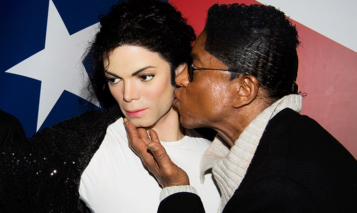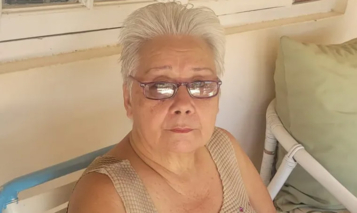Last night a friend sent this photo of blogger Necole Bitchie with the caption “She is getting bleach happy.”
Because the friend didn’t identify the females in the photo, I had no idea the female on the left was Necole.
The last time we explored the issue of Necole’s low self-esteem was in this post dated January 2009. As you can see, Necole’s bleaching has gotten progressively worse. She is lighter than the LSLH chick pictured on the right.
How sad it must be to feel like a stranger in your own skin?

Necole may suffer from Body Dysmorphic Disorder or BDD.
BDD is a chronic mental illness in which the individual obsesses about perceived flaws in their general appearance. The late Michael Jackson may have suffered from BDD, as did Jocelyn Wildenstein, aka cat woman.
People who have BDD seek out sympathetic doctors to perform numerous cosmetic surgeries a year. Their obsessions disrupts their daily lives and affects their interpersonal relationships with others. They are constantly in the mirror critiquing their appearance.
Causes
There is no known cause for BDD. Some doctors believe the disorder may be caused by genetic or environmental factors, such as childhood experiences or pressure from cultural standards of beauty. The risk of having BDD increases if a family member already suffers from it. Having other undiagnosed mental disorders, such as narcissism, is also a factor.
Diagnosis
A psychological exam is required to diagnose BDD. According to the world renowned Mayo Clinic, it can be difficult to diagnose the disorder if other mental disorders overlap, such as an eating disorder or obsessive-compulsive disorder.
Symptoms
One of the symptoms of BDD is a reluctance to appear in photos. We know that varies because Michael Jackson and Jocelyn Wildenstein loved to have their pictures taken.
Other symptoms include:
Treatment
Treatment of BDD can be difficult if the individual refuses to acknowledge they have a problem. Treatment plans include cognitive behavioral therapy and medications for depression and anxiety.
Talk to your doctor or therapist to determine which type of therapy is best for you.
DISCLAIMER
Any medical information published on this blog is for your general information only and is not intended as a substitute for informed medical advice. You should not take any action before consulting with your personal physician or a health care provider. Sandrarose.com and its affiliates cannot be held liable for any damages incurred by following advice found on this blog.
More Info On The Web
Body Dysmorphic Disorder – Mayo Clinic
Body Dysmorphic Disorder (BDD) – ADAA.org
Body Dysmorphic Disorder (BDD) Symptoms – Medicine.net
Photo on left by Derek Blanks, photo on right by ExclusiveAccess.net, photo top by Instagram.com






